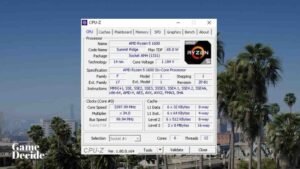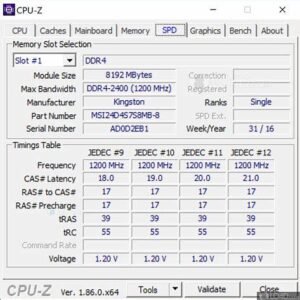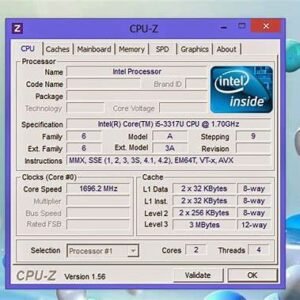CPU-Z
What's new

CPU-Z, developed by CPUID, is a free system information tool that provides detailed insights into your computer's hardware components. It offers information about the processor, motherboard, memory, and more, assisting users in understanding their system's specifications and performance.
CPUID
+9
Gizmodo
+9
TechPowerUp
+9
Recent Updates:
Version 2.14 (February 8, 2025): The latest release includes various improvements and bug fixes.
Version 1.04 for Windows ARM64 (June 24, 2024): This update enhanced support for Qualcomm Snapdragon processors, including the X Elite & Plus models, and added support for the Snapdragon 720G. It also introduced a benchmark tab for performance assessments.
Images




| Updated | The latest version of CPU-Z, a popular software for gathering detailed information about your system's hardware components, can vary over time as updates are released. To get the most recent version of CPU-Z, I would recommend visiting the official website or checking trusted software download platforms like: Official CPU-Z Website: cpuid.com Trusted Download Sites: Sites like allsoftwares.in also typically have the latest version. |
| Size | 3.46 MB |
| Version | 2.15 |
| Requirements | CPU-Z is a popular system information software that provides detailed information about the CPU, motherboard, RAM, and other system components. Here are the basic system requirements for running CPU-Z: Recommended Requirements: Operating System: Windows 10 or Windows 11 (64-bit) for optimal performance. Processor: A modern multi-core processor (Intel Core i3, i5, i7, or AMD Ryzen). RAM: 2 GB or more of RAM for better performance when running multiple applications alongside CPU-Z. Storage: Sufficient free disk space for additional logs or system files generated by other monitoring applications (around 50 MB or more). Graphics: Any DirectX 9 compatible graphics card (though not strictly necessary for CPU-Z). Other Notes: CPU-Z doesn't require advanced hardware acceleration or high-end graphics, so it will run on most computers. It's important to note that it only reports the information of the current hardware installed in the system; it doesn't require much processing power to operate. |
| Downloads | 50+ M |
Description

CPU-Z is a popular system profiling and monitoring tool for Windows and Android that provides detailed information about a computer’s hardware components. It is widely used by enthusiasts and professionals for checking CPU specifications, memory details, and motherboard information.
Key Features of CPU-Z:
Processor Information:
Name, codename, package, and technology
Core voltage, clock speeds, and multiplier
Instruction sets and supported features
Cache Details:
L1, L2, and L3 cache sizes
Cache latency and structure
Motherboard Information:
Manufacturer, model, and chipset
BIOS version and date
Memory (RAM) Details:
Type (DDR3, DDR4, DDR5, etc.), size, and frequency
Timings, latency, and SPD (Serial Presence Detect)
Graphics Card (GPU):
Vendor, model, and clock speeds (only basic details)
Benchmarks:
CPU benchmarking and comparison
Power and Thermal Monitoring (on supported hardware)
Supported Platforms:
Windows (Desktop version)
Android (Mobile version, limited features)
Usage:
Check system specifications for upgrades or troubleshooting
Overclocking analysis and stability testing
Benchmarking for performance comparison
Download Link:
You can download CPU-Z from the official website:
🔗 https://www.cpuid.com/softwares/cpu-z.html
![]()
Download links
How to install CPU-Z?
1. Download the ZIP file.
2. Install the Softwares Installer application
3. Open the application and click on "Install Softwares".
4. Find the folder where the downloaded ZIP is located and select it.
5. Follow the steps that appear on the screen.